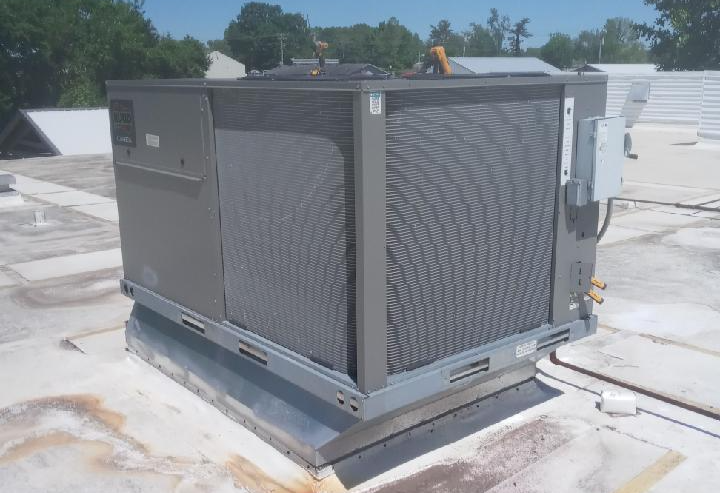How Long a Commercial Air Conditioner Install Takes
How Long a Commercial Air Conditioner Install Takes
I. Introduction
Installing a commercial air conditioner is a significant undertaking that involves meticulous planning and execution. The duration of the installation process can vary based on several factors, making it crucial to understand the intricacies involved.
A. Importance of Commercial Air Conditioner Installation
Commercial air conditioning is vital for maintaining a comfortable environment in business spaces. Efficient installation ensures optimal performance, energy efficiency, and longevity of the equipment. In this article, we will delve into the factors influencing the duration of a commercial air conditioner installation.
B. Factors Influencing Installation Time
Before diving into the installation process, it's essential to grasp the factors that can affect the overall timeline. These include the size of the space, complexity of the system, and the level of customization required.
II. Pre-Installation Preparation
A. Site Assessment
The first step in any commercial air conditioner installation is a thorough site assessment. HVAC professionals evaluate the layout, insulation, and existing infrastructure to determine the best approach for installation.
B. Sizing and Load Calculation
Accurate sizing is crucial for optimal performance. HVAC experts perform load calculations to determine the cooling requirements, ensuring the selected system is appropriately sized for the space.
C. Equipment Selection
Choosing the right equipment is a critical aspect of the pre-installation phase. Factors such as energy efficiency, environmental impact, and specific client needs play a role in selecting the most suitable commercial air conditioning system.
III. Planning Phase
A. Permits and Regulations
Securing necessary permits and adhering to local regulations is a crucial step in the planning phase. HVAC professionals work closely with authorities to ensure compliance with building codes and safety standards.
B. Coordination with Other Trades
Effective communication and coordination with other trades involved in the construction process are essential. This includes collaboration with electricians, plumbers, and construction crews to streamline the installation process.
C. Project Scheduling
Creating a detailed project schedule is key to managing time efficiently. HVAC installers work with project managers to establish timelines, accounting for potential delays and ensuring a smooth workflow.
IV. Installation Process
A. Delivery and Unloading
Upon completing the planning phase, the actual installation begins with the delivery of equipment to the site. Careful unloading and placement of components set the stage for a successful installation.
B. Ductwork and Ventilation Setup
Installation of ductwork and ventilation systems is a meticulous process. Proper sizing and configuration are essential to ensure even cooling throughout the commercial space.
C. Unit Placement and Connection
Positioning the commercial air conditioning units correctly and connecting them to the ductwork are critical steps. HVAC professionals pay attention to every detail to guarantee seamless integration.
D. Electrical Wiring
The electrical aspect of the installation involves connecting the units to the power supply. This step requires precision to avoid electrical issues and ensure the safe operation of the system.
V. Testing and Quality Assurance
A. Functionality Testing
After installation, rigorous functionality testing is conducted. This includes checking the performance of each unit, assessing temperature control, and verifying the overall efficiency of the system.
B. Inspection and Compliance Checks
Quality assurance measures involve thorough inspections to confirm compliance with industry standards and local regulations. Any discrepancies are addressed promptly to meet safety and performance requirements.
VI. Post-Installation Considerations
A. Client Orientation
Upon successful installation, HVAC professionals provide clients with orientation sessions. This includes guidance on system operation, maintenance, and troubleshooting common issues.
B. Maintenance Guidelines
Educating clients about proper maintenance practices is crucial for the longevity of the commercial air conditioning system. Regular maintenance enhances efficiency and reduces the risk of unexpected breakdowns.
VII. Common Challenges and Solutions
A. Unforeseen Issues
Despite meticulous planning, unforeseen challenges can arise during installation. Experienced HVAC professionals are equipped to handle unexpected issues promptly, minimizing delays.
B. Communication Challenges
Effective communication among project stakeholders is essential. Addressing any communication challenges promptly ensures a cohesive and streamlined installation process.
VIII. Benefits of Professional Installation
A. Energy Efficiency
Professional installation contributes to the energy efficiency of commercial air conditioning systems. Proper sizing, installation, and calibration enhance performance and reduce energy consumption.
B. Longevity of Equipment
A professionally installed system is more likely to have an extended lifespan. Correct installation practices prevent premature wear and tear, ensuring the longevity of the equipment.
IX. Case Studies
A. Successful Installations
Exploring case studies of successful commercial air conditioner installations provides insights into best practices and successful outcomes.
B. Lessons Learned
Reflecting on past installations allows HVAC professionals to learn from challenges and continuously improve their processes.
X. Conclusion
In conclusion, the duration of a commercial air conditioner installation varies based on several factors. From meticulous planning to precise execution, each step contributes to the overall timeline. Professional installation not only ensures optimal performance but also enhances energy efficiency and equipment longevity.
FAQs
- How long does the typical commercial air conditioner installation take?
- The timeline varies but can range from a few days to several weeks, depending on factors like size and complexity.
- What factors influence the overall installation time?
- Size of the space, system complexity, and customization requirements can impact installation duration.
- Is professional installation necessary for commercial air conditioners?
- Yes, professional installation is crucial for optimal performance, efficiency, and equipment longevity.
- How can clients contribute to a smoother installation process?
- Clear communication, providing necessary information, and adhering to project schedules can facilitate a smooth installation.
- Are there maintenance tips for ensuring the longevity of commercial air conditioning systems?
- Regular maintenance, such as cleaning filters and scheduling professional inspections, can extend the lifespan of the system.




Comments
Post a Comment